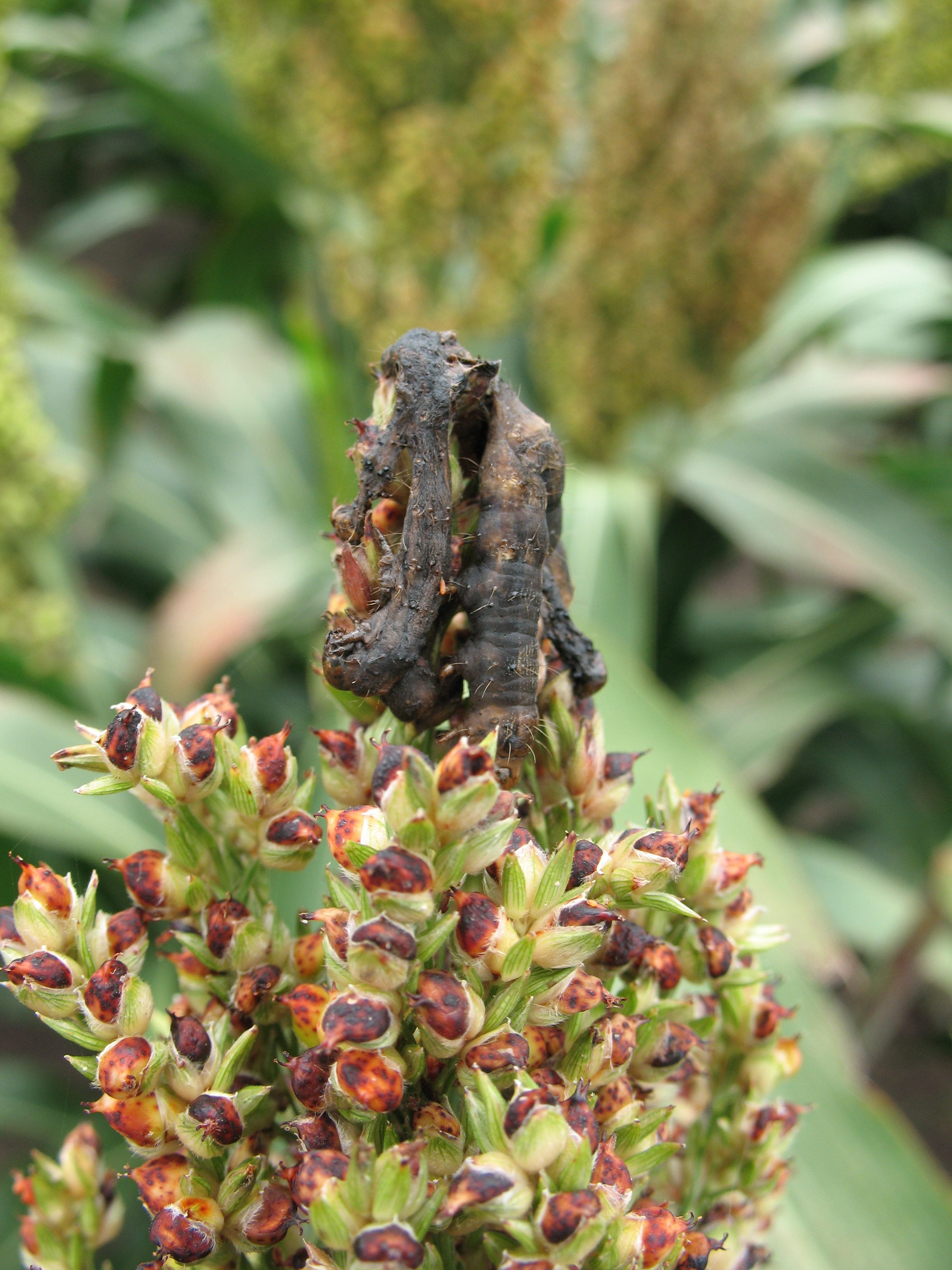As the earlier plantings of sorghum progress through flowering, moderate to high Helicoverpa pressure means that many crops have caterpillar numbers over threshold. Nucleopolyhedrovirus (NPV) is one of the main insecticides used to control Helicoverpa larvae in sorghum, however prevailing conditions play an important role in the speed and level of control achieved with NPV.
Cooler weather
Larvae need to be actively feeding when NPV is applied for good control to be achieved. Because larval feeding rate is largely governed by temperature, NPV is recommended to be applied between 25°C and 35°C. However good performance can be achieved under cooler conditions, with application temperatures above 18°C considered acceptable. Temperatures below 15°C can cause larvae to stop feeding, and prolonged periods below 15°C may cause “cold shock”, with larvae taking a few hours of warmer conditions to recover. For this reason, it best to delay applying NPV until temperatures have warmed to above 20°C following a cold night.
The cooler conditions will also mean that control with NPV will be slower than usual, since the rate of virus infection is proportional to insect growth rate. Expect to see small (1st and 2nd instar) larvae dying within 6 days, however medium (3rd instar) larvae may take up to 8 days to die, depending on the average temperature. Larvae dying slowly due to cool weather will not increase the level of damage from larval feeding.
Applying NPV where rain is forecast
The likelihood of wet weather raises questions about how best to time NPV applications when rain is expected. NPV is significantly more effective against smaller larvae, so delaying application can impact on performance.
Many years of field experience has shown that rainfall following an application generally has no impact on NPV performance, or may even have a positive impact on NPV performance (NPV is spread by rainfall splash). So do not delay an application if light to moderate rain is expected. Where very heavy rainfall is expected within one hour after application, it is advised to delay application until conditions improve, as there is a risk of the virus being washed off the crop before it is ingested by the larvae.
Other key issues relating to NPV use
- Ideally apply NPV when larvae are less than 7 mm in length (2nd instar – small). These size larvae are more effectively controlled with lower rates of NPV
- Do not target larvae over 13 mm in length (4th instar – medium) with NPV – control will be compromised and these larvae will do significant damage before succumbing to NPV infection
- There is no economic benefit in controlling larvae with NPV in pre-flowering sorghum
Article by Anthony Hawes

